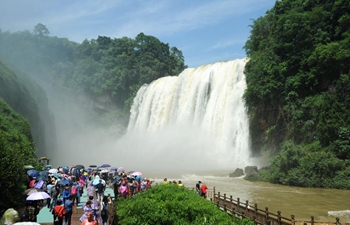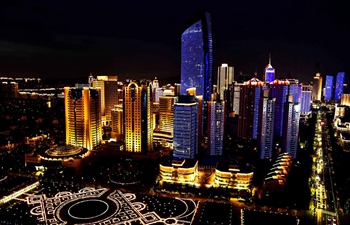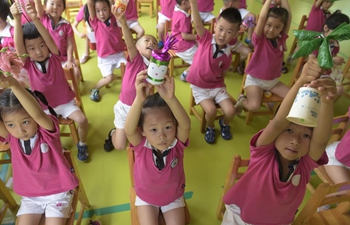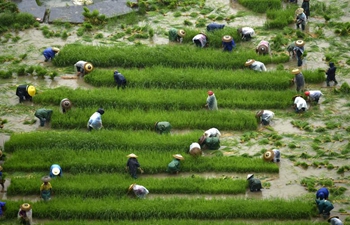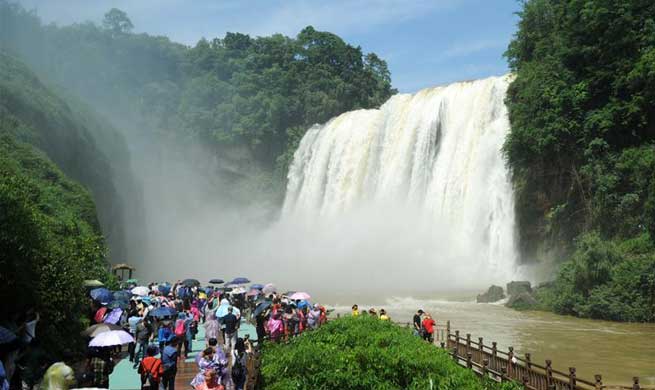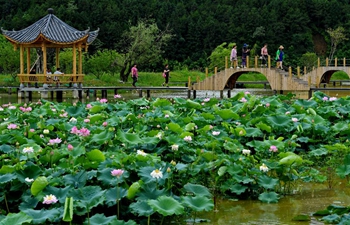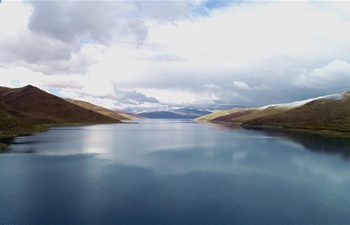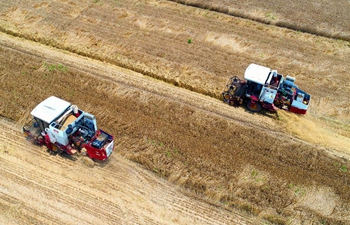by Xinhua writers Chen Wenxian, Du Zhen
JERUSALEM, June 5 (Xinhua) -- The photo exhibition themed "Cultural Exchange between Dunhuang and Silk Road" sparks strong interest of Israelis to learn Chinese culture and history.
A total of 30 high-resolution digital photos of mural paintings from Dunhuang caves, located in northwest China's Gansu Province, are presented in the exhibition opened on Monday in Tel Aviv's China Cultural Center.
These photos, contributed by China's Dunhuang Academy, vividly illustrate commercial and cultural exchanges among different countries and ethnic groups along the ancient Silk Road.
"Dunhuang is a key pass along the ancient Silk Road that served as the gateway to the western regions in ancient China," said Zhang Yuanlin, chief librarian and director of Center for Research on the Silk Road and Dunhuang of Dunhuang Academy.
"The prosperity in the Silk Road promoted exchanges between the Eastern and Western civilizations, enriched the cultural development of Chinese civilization, and allowed people to construct caves in Dunhuang from the fourth to the 14th centuries," Zhang said at the opening ceremony of the exhibition.
"These caves have become a cultural treasury, a testimony to the fusion of diverse civilization along the Silk Road," he added.
It is the first time that photos of arts from Dunhuang caves are exhibited in Israel, said Zhang.
"Though it is a small-scale photo exhibition, Israelis are very active in asking questions and have great passion over Chinese culture, which surprises us very much," he said.
A photo named "the Mourning Scene of Princes from Various Countries" reflects close relations of China in Tang Dynasty (618-907) and foreign countries.
In the photo of "Double Flying Apsaras," one apsaras' body is slightly bent with her head tilted backwards, and the other is extending her arms with the body naturally positioned.
"It is extremely elegant and has a very interesting choice of color. If you look carefully, you cannot see any wings. They are definitely like a magic being. They are like floating in the air," said Matteo Compareti in an interview with Xinhua.
Compareti visited Dunhuang caves for the first time as early as in 1995. He said that Dunhuang is an amazing scenic spot where people could see all the caves and the exhibition has brought him back to more than 20 years ago. "I hope to visit Dunhuang again in the short coming future," said Compareti.
"It is a great opportunity for Israelis to come and see a small sample of what Dunhuang has offered to Israelis," Asaf Goldschmidt, foreign director of Confucius Institute at Tel Aviv University, told Xinhua.
Dunhuang is a beautiful and amazing place for both tourists and scholars, added Goldschmidt. "This is a great exhibition that Israelis should come, see and enjoy. And it is much more interesting if they go to China and visit the real thing."
The exhibition, which will last one week, is jointly held by China's Dunhuang Academy, Confucius Institute at Tel Aviv University and China Cultural Center in Tel Aviv.




